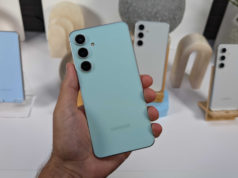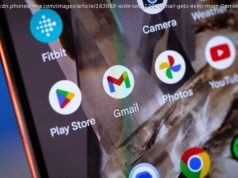The Samsung Galaxy S22 Ultra is a big, powerful and attractive Android phone that puts the power of the S Pen inside, and will turn heads with its astounding camera performance.
If we were to judge the Samsung Galaxy S22 Ultra on nothing but its cameras and, in particular, the optical and digitally-enhanced zoom capabilities, we might call it the best smartphone ever. It’s not, of course – every handset is the sum of its design, features, components, utility, and value – but taken as a whole, this Samsung Galaxy Series-Galaxy Note hybrid is an excellent, albeit massive Android handset that not only ticks all the important boxes, but delivers more features than you may ever want or use. The design is an echo of, but also more forward-leaning than, Samsung’s last Note device. It really is a hybrid. There will be no complaints about the ultra-high-resolution,6.8-inch screen, which offers brilliant colors and smooth motion at 120Hz, but is smart enough to stop down all the way to 1Hz, when that’s all you need, to save on battery life. The camera array is strong. Sure, it’s not a complete overhaul of the Galaxy S21 ’s camera system, but that was already pretty darn good. This is arguably better – the Optical and Space Zooms are simply marvels of modern technology. We also love the thin and light S Pen, and we’re thrilled that it’s finally integrated – literally – into the Galaxy line. It does so many things so well, and for productivity-focused mobile users it could be a godsend. Samsung’s One UI 4.1 software is mostly good, even if it does create some duplication of browsers, photos, and messages apps. Other tools, like Expert Raw, a freely downloadable Samsung app that gives you full access to all the camera controls and lets you capture and save RAW format photos, and the video-conferencing app Google Duo, which both do an excellent job of showing off the phone’s power and versatility, are the real highlights here. Performance-wise, the Samsung Galaxy S22 Ultra’s 4nm Qualcomm Snapdragon 8 Gen 1 processor acquits itself nicely (no, it doesn’t beat Apple’s A15 Bionic). The point is, we couldn’t find a single app that was sluggish or disappointing on the mobile monolith. Battery life was more of a mixed bag. We did get a full day of solid use (18 hours or so), but we thought we might get more out of the massive 5,000 mAh battery and high-performance, energy-efficient CPU. Ultimately, though, this is the kind of device that can make you forget what’s come before it. If you were used to a smaller-screen device, you’ll feel cramped if you ever go back to it. If you struggled in the past to take photos of the moon, you’ll wonder why Apple hasn’t figured this out yet. If you wished that your device had just a little more power to complete those raw image-editing tasks, your wish has been granted. Part of Samsung’s new S22 lineup, but looking nothing like its siblings, the Galaxy S22 Ultra is to the casual observer a Galaxy Note in a shiny, new coat. It does have a much bigger and bolder camera array (lifted pretty much intact from the S21 Ultra), but it’s otherwise a canny adjustment of the Note aesthetic or, as Samsung might call it, the “Note Experience.” The Samsung Galaxy S22 Ultra will be available in Phantom Black, Phantom White, Green, and Burgundy. Pre-orders are on currently with the units in store on the 25th February. Prices for each config of the Galaxy S22 Ultra are mentioned below for the UAE, Saudi Arabia, Qatar, Kuwait, Bahrain and Oman. An inarguably beautiful device, the 6.8-inch Samsung Galaxy S22 Ultra – owing to its Note roots – doesn’t look much like the Galaxy S22 Plus. It starts from the original Galaxy Note 10 design but takes it forward with even more premium materials. The frame is a solid Armor Aluminum that rigidly resists bends. Polished on the outside to a near-chrome finish, the metal is sandwiched between two Corning Gorilla Glass Victus+ plates. The front glass is high-gloss, and the back is a warm satin finish; both do a decent job of repelling fingerprints. The phone’s IP68-rated body also handily resided the water we ran over it. The above finishes come in seven color options: Phantom Black, Phantom White, Burgundy, Green, Graphite, Sky Blue and Red. The dark green is beautiful, but we’ve fallen in love with the inky Phantom Black of our test device. Did we mention that this is a big phone? Its dimensions are 163.3 x 77.9 x 8.9mm, which is taller than a 6.7-inch Apple iPhone 13 Pro Max, but, somewhat surprisingly, at 229g, lighter than Apple’s biggest handset. Small hands will struggle with the Samsung Galaxy S22 Ultra. The curved edges make the Galaxy S22 Ultra comfortable to hold, but the lack of edges also makes it feel slippery as a fish – albeit a fish made of hard glass and metal. There are two flat surfaces, on the top and bottom of the device. The top plane is a mostly unbroken slab of metal, with one tiny drill-through hole for a microphone. The bottom surface houses the SIM slot, USB-C charging port (the phone ships with a USB-C cable but no charging brick- BYOB is a thing now), speaker grille, and the S Pen. If you’re in any doubt that this is a Note in S Series clothing, you need only to press that slight bump on the base and pop out the familiar and light S Pen. It’s all the things a Samsung S Pen should be, giving up nothing for its new Galaxy S22 Ultra home. More on the stylus later. The 6.8-inch AMOLED screen is another highlight. It supports up to 3088 x 1440 pixels (WQHD+) resolution, which works out to 500 ppi. The iPhone 13 Pro Max, by contrast, has 458ppi on its 6.7-inch 2778 x 1284 screen. It’s worth noting that the S22 Ultra’s default resolution is 2316 x 1080 (FHD+), which Samsung says uses somewhat less battery life – although halfway through our testing we switched to WQHD+ and didn’t notice much, if any, battery performance loss. Everything from games and videos to apps looks fantastic on the display, which now has the ability to smoothly shift from a 1Hz refresh rate all the way up to a butter-smooth 120Hz. Such adaptive technology can be hard to notice because, for instance,1Hz might be used for the home screen or a word processor, while 120Hz might be called on for gaming. The point is, when the imagery should be clean and smooth, it is.






